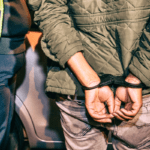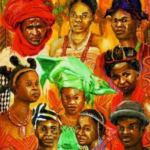What are the official languages in South Africa and how are they protected and promoted by the government? Find out in this article.
When South Africa comes to mind, many people remember the beautiful mountains and safaris but probably not the languages.
Many countries have one or two official languages, but this is different for a few countries with multiple official languages, including South Africa.
South Africa has 11 official languages. It is a nation with diverse cultures and languages. And as you walk around the South African streets, you may hear words spoken in languages other than English.
In 1997, the new South African constitution made these languages legal and gave them all the same legal status.
So on your next trip to the rainbow nation, learning a few phrases in one of these official languages will be a good idea.

The South African Languages
South Africa is one of the multilingual countries globally and is regarded as a multiethnic nation both in Africa and around the world.
South Africa’s constitution recognizes 11 official languages out of the many languages present in the country.
These minority languages include Swahili, Urdu, German, Tamil, Dutch, Portuguese, Italian, Hindi, Greek, etc.
About 57 million people who make up the country’s population can speak more than one language.
Therefore, the country is an excellent example of diglossia, a term used when two languages exist in the same geographic and linguistic environment and have different social uses for each language.
So what are these 11 official languages in South Africa? Let’s find out.
11 Official Languages in South Africa
The various languages spoken in the country depend on the province one lives in. For example, people living in one province will speak languages differently from people living in a different province.
Below are the official languages in South Africa.
1. Sesotho sa Leboa (Sepedi)
This language was first called Sesotho sa Leboa in 1993. In 1996, the name was changed to Sepedi. People still argue about which word to use, but most use “Sesotho sa Leboa.” Sepedi is more of a form of Sesotho sa Leboa than a separate language.
Sepedi is the third most common African language in South Africa. About 9.1% of the population speaks it. The city of Limpopo is where most of the people who speak Sesotho sa Leboa live.
Some people also speak this language in certain parts of Botswana. Sesotho sa Leboa is a Bantu language, which means it is related to Setswana and Sesotho.
2. Sesotho
Sesotho is the official language of the Free State. It’s among the three Sotho languages, along with Setswana and Sesotho sa Leboa. It is also a Bantu language spoken in countries like Botswana, Lesotho, Zambia, and Namibia, besides South Africa.
About 7.6% of the people in South Africa speak Sesotho as their first language. Most of these people live in the Free State province.
Southern Sesotho is one of the official languages of Lesotho, which is an exciting thing about Sesotho.
Scholars think that the written Sesotho language used to be based on the Tlokwa dialect, but now it is based on the Kwena and Fokeng dialects.
The spoken language is very different and unique. It has more vowels than most languages and consonants that are like semi-vowels. The Sesotho language has many variations that make it intriguing to listen to.
3. Setswana
Setswana, also called Tswana, is the language spoken in North West and its neighbor Botswana. It is a Tswanaic language and belongs to the Sotho-Tswana subfamily, along with Sesotho and Sesotho sa Leboa.
It is the third-largest official language of the country, and about 8% of South Africa’s people speak Setswana as their primary language. More than half of these people live in the Northwest, while the rest live in Gauteng and the Northern Cape.
4. siSwati
Only 2.5% of the total population of South Africa speaks siSwati as their primary language. However, it is in Mpumalanga that a majority of the people speak the siSwati language. This language belongs to the same group of languages as isiNdebele, isiXhosa, and isiZulu.
SiSwati is not only spoken in South Africa but also in Swaziland, which is a neighboring country. The Siswati language is written in the Latin alphabet but still uses the spelling rules of the Nguni language. It is the third smallest language in South Africa.
5. Tshivenda
Tshivenda is one of the leading African languages spoken in South Africa. It is part of the Sotho-Makua-Venda subfamily but not the Sotho group. Tshivenda language is unique and related to the languages of Niger Bantu. Many people who speak Tshivenda come from a royal family.
About 2.4% of the people in South Africa speak the Tshivenda language. Most of those people live in the northern area of Limpopo.
Like many other South African languages, the language has more than one name. Depending on who you ask, Tshivenda may be called Luvenda or Venda. Tshivenda language is written with the Latin alphabet.
6. Xitsonga
In the Northeast of South Africa, you will find many people who speak the Xitsonga language. This is one of the few languages that belong to the Tswa-Ronga group. Most others belong to the Nguni group.
Although it is not the least spoken language in South Africa, it is one of the minority languages. About 4.5 percent of the people in South Africa speak and understand Xitsonga.
7. Afrikaans
The Dutch colonized South Africa at a certain point in history. The Afrikaans language originated from the Dutch dialect when the Cape of Good Hope was colonized in 1652.
It became the official language of South Africa in 1910. About 13.5% of the people speak the Afrikaans language today, especially those who live in the Northern Cape. Today, most people in the Northern Cape speak the language.
Even though the sounds of Dutch and Afrikaans are quite different, they share many similarities in terms of their vocabulary. They differ mostly in pronunciation and grammar.
8. English
Aside from the Dutch, the British colonized many parts of South Africa and introduced the English language. As of 1910, only Dutch and English were South Africa’s official languages.
Even though Dutch is no longer an official language, English has kept its status as an official language. English is mainly used in cities, in government, the media, and many public places.
Although used in the public sector, only 9.6% of the population speaks English as their primary language. Most of these people live in Gauteng.
9. isiNdebele
IsiNdebele, also known as Southern Ndebele, is the language spoken by the least number of people in South Africa.
It is the primary language of only about 2% of the population. You will mostly see people speaking the IsiNdebele language in Mpumalanga and Gauteng.
Although not widely spoken in South Africa, it is the primary language in Zimbabwe. Both countries speak the same language, but there is a slight variation in pronunciation.
In some parts of Botswana, there are also small groups of people who speak isiNdebele.
Groups that speak isiNdebele are known for their beautiful beadwork, colorful homes, and artistic skills.
10. isiXhosa
IsiXhosa is the second most common primary language in South Africa. About 16% of the population speaks it as their first language. This is because the Xhosa is one of the South African major cultural groups.
The language is mainly spoken in the Eastern Cape, but many other languages have influenced it.
Even though it is a Nguni language, the Khoekhoe languages seem to have had some influence on it. Some words in isiXhosa come from both English and Afrikaans.
One thing that makes isiXhosa unique is the click sounds that the tongue makes when speaking. It has 15 click sounds, but the letters Q, C, and X are the main letters. These clicking sounds have their origin in the San and Khoi Khoi languages.
isiXhosa has been getting a lot of attention lately because it was used in the movie Black Panther.
11. isiZulu
This is the most common language in South Africa, with about a quarter of the population speaking it as their first language. It is the language of most people in KwaZulu-Natal.
Because isiZulu is used so often in South Africa, many people choose to learn it as their second language.
It is related to isiXhosa, siSwati, and isiNdebele, which are also Nguni languages. Like the other languages of South Africa, the Latin alphabet is used in writing the isiZulu language.
Because so many people in the country speak isiZulu, it is typically assumed to be the country’s primary language.
Conclusion
The official languages in South Africa show the country’s rich cultural history and diversity. Although there are 11 official languages in the country, there are still many languages that South Africa’s constitution is yet to recognize.
Let’s keep our fingers crossed on how these languages will evolve and if they will be added to the list of South African official languages in the near future.










